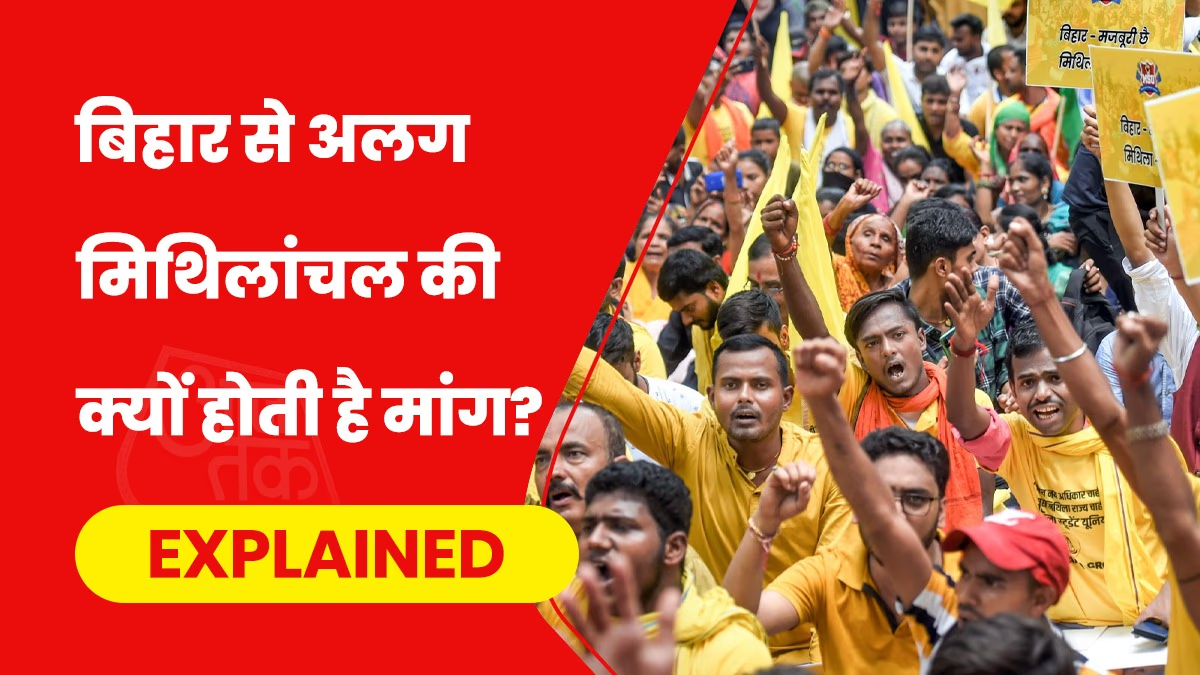Former Chief Minister of Bihar, Rabri Devi, has voiced the demand for a separate state for Maithili speakers. As the leader of the opposition in the Bihar Legislative Council, she brought this demand into the assembly. Rabri Devi has raised the call for a separate Mithilanchal in 2018 as well.
This demand comes at a time when the central government has recently translated the Constitution into Maithili. It is believed that Rabri Devi is making this demand to counter the central government's actions. She insists that a separate 'Mithilanchal' is needed for Maithili speakers.
Out of 38 districts in Bihar, nearly 40 million people speak the Maithili language. Apart from Bihar, parts of Jharkhand and Nepal also speak Maithili. This language was included in the Eighth Schedule of the Constitution in 2003, alongside 22 other languages.
The demand for a separate 'Mithilanchal' has persisted for centuries. On November 25, a massive demonstration was held at Jantar Mantar in Delhi, organized by the All India Mithila State Struggle Committee.
How Long Has the Demand for Mithilanchal Existed?
In 1902, British India official George Grierson conducted a language-based survey that included a separate map for Mithila.
In 1912, when Bihar was formed by separating it from the Bengal Presidency, the call for a separate Mithila state based on that survey gained momentum. However, the British denied this request, fearing it would divide Bihar into two states—Odisha and Mithila.
In 1921, the Maharaja of Darbhanga, Rameshwar Singh, demanded a separate Mithila state. Although Odisha was made a separate state in 1936, Mithila's demand was ignored.
After independence, several states were formed based on linguistic lines between 1950 and 1956, but Mithila's demand was overlooked once again.
In 1952, under the leadership of Dr. Laxman Jha, a significant movement was launched for a separate Mithila state. Babu Janki Nandan Singh, popularly known as Mithila Kesari, expressed his opposition within Congress in 1954 over the Mithila demand. In 1956, he submitted many documents to then Prime Minister Jawaharlal Nehru regarding Mithila.
In 1986, Member of Parliament Vijay Kumar Mishra of the Janata Party led a large movement for a Mithila state. This movement included several northern Bihar districts, including Muzaffarpur, Darbhanga, Saharsa, Purnia, and Bhagalpur. A railway blockade protest also occurred for three days during this time. The Mithila State Struggle Committee held another agitation in March 1996.
Even BJP-JDU Leaders Have Voiced Support
In 2000, when Jharkhand was separated from Bihar, the demand for a Mithila state gained renewed strength. In August 2004, BJP leader Tarakant Jha called for a movement seeking a Mithila state during a press conference and launched a signature campaign for it. However, he was later expelled from the BJP.
Similarly, in 2008, then-JDU state president Shravan Chaudhary said their party advocated for a Mithila state comprising 18 Lok Sabha and 108 assembly constituencies from northern Bihar, citing the region's backwardness and potential growth through statehood.
Cricketer-turned-BJP MP Kirti Jha Azad also demanded a Mithila state in 2015 and presented the issue in Parliament.
In 2019, three BJP leaders—Gopal Thakur (MP from Darbhanga), Ashok Kumar (MP from Madhubani), and Sanjay Sarawgi (MLA from Darbhanga)—also demanded a Mithila state. They warned the government that they would not beg but build Mithila forcefully, if necessary.
What is Mithilanchal?
Mithilanchal comprises significant portions of Bihar and Jharkhand and some districts of Nepal. The native language here is Maithili, and speakers are called Maithil. Mithilanchal is bordered by the Mahananda River in the east, the Ganges in the south, the Gandaki in the west, and the Himalayan foothills in the north.
Today, Mithilanchal would include 20 out of Bihar's 38 districts, such as Darbhanga, Madhubani, Saharsa, Madhepura, Supaul, Begusarai, Katihar, Araria, Samastipur, Muzaffarpur, and Purnia.
Can Mithilanchal Become a Separate State?
The power to establish a state or Union Territory rests solely with the central government under Article 3 of the Constitution. The central government can alter or rename state boundaries.
When a new state is proposed, it first requires a resolution passed in the state assembly concerned. This resolution is then sent to the President, after which the central government may take action.
To create a new state or change its name, a bill is introduced in Parliament, where it is later sent to impacted states by the President for their opinions, allowing six weeks for a response. However, the President is not bound to adhere to their advice.
Actions Central Government Can Take
Under Article 3, the central government has the power to adjust a state's boundaries or name.
The central government can carve out part of a state, merge territories from two or more states, adjust state boundaries, or rename them.
Since 1956, when the State Reorganization Act was enacted, India has formed 14 states and 6 Union Territories. Today, it comprises 28 states and 8 Union Territories.
Five states have changed names: Karnataka (formerly Mysore), Tamil Nadu (formerly Madras), Uttarakhand (formerly Uttaranchal), Odisha (formerly Orissa), and Puducherry (formerly Pondicherry). Additionally, four Union Territories—Himachal Pradesh, Mizoram, Arunachal Pradesh, and Goa—have been made states.
The last division was Jammu and Kashmir into two separate Union Territories: Jammu & Kashmir and Ladakh.




